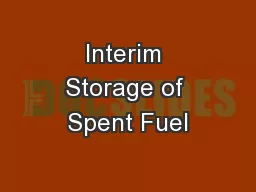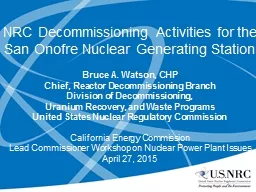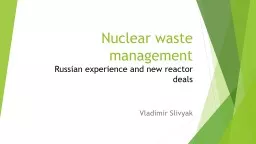PPT-Decommissioning of Spent Nuclear Fuel Ponds
Author : studmonkeybikers | Published Date : 2020-08-04
University of Leeds Student Sustainability Research Conference 2019 Leeds UK Alexander P G Lockwood BEng Supervisors Dr Timothy Hunter Dr David Harbottle
Presentation Embed Code
Download Presentation
Download Presentation The PPT/PDF document "Decommissioning of Spent Nuclear Fuel Po..." is the property of its rightful owner. Permission is granted to download and print the materials on this website for personal, non-commercial use only, and to display it on your personal computer provided you do not modify the materials and that you retain all copyright notices contained in the materials. By downloading content from our website, you accept the terms of this agreement.
Decommissioning of Spent Nuclear Fuel Ponds: Transcript
Download Rules Of Document
"Decommissioning of Spent Nuclear Fuel Ponds"The content belongs to its owner. You may download and print it for personal use, without modification, and keep all copyright notices. By downloading, you agree to these terms.
Related Documents














